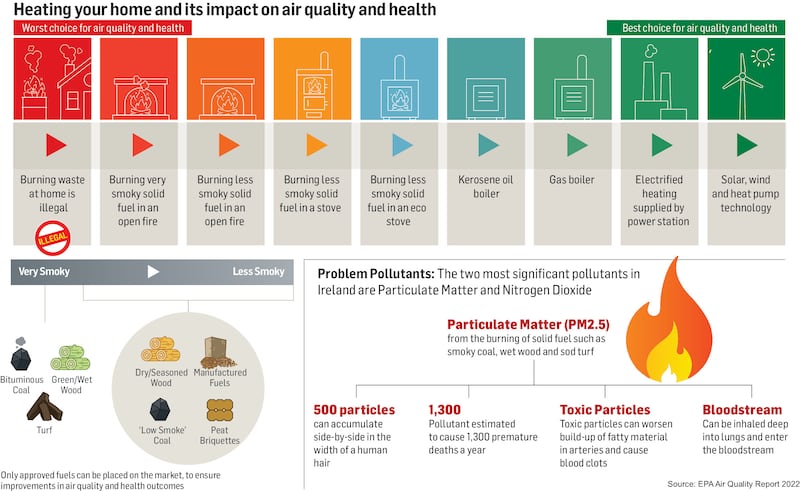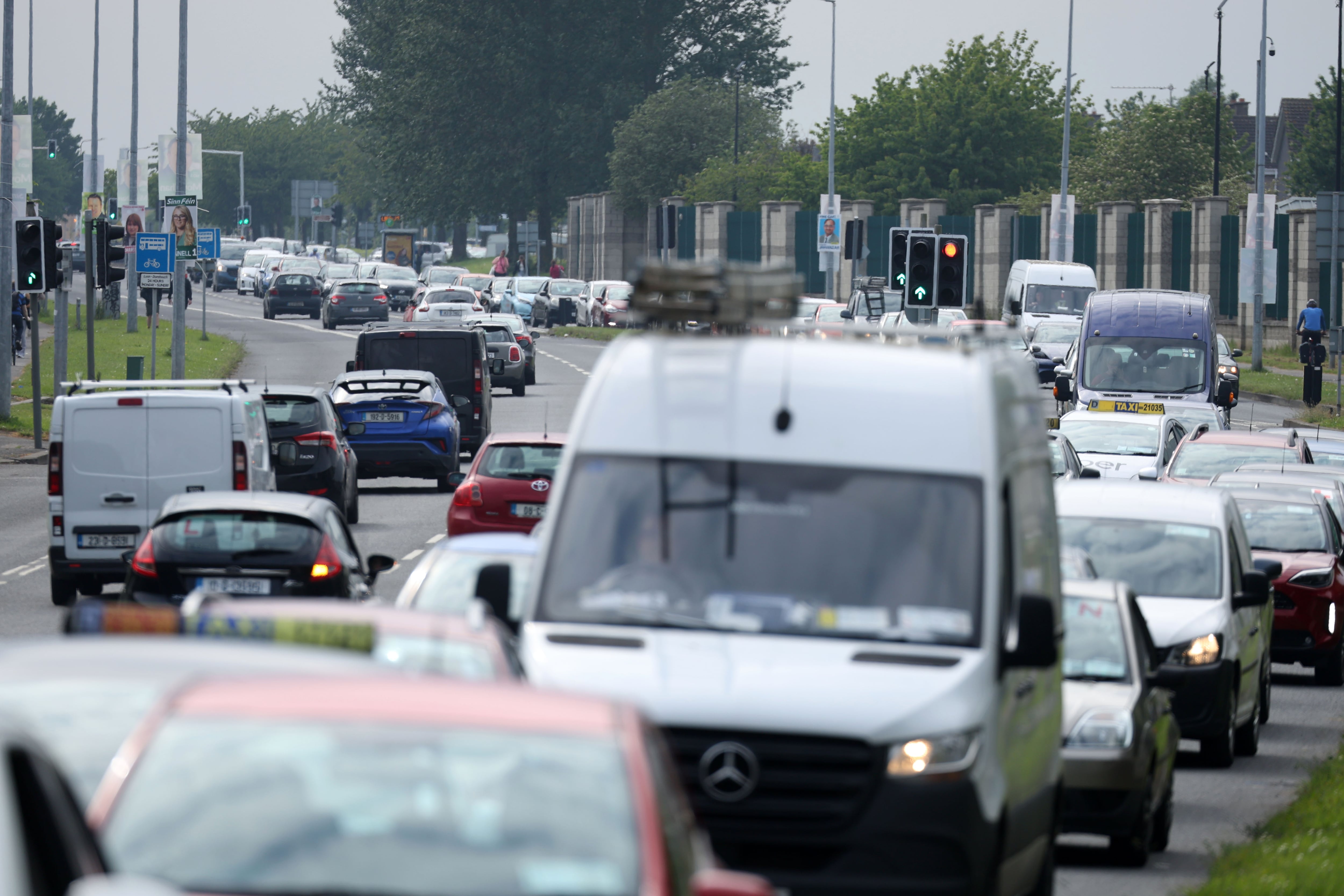Air quality in Ireland is generally good but there are persistent “concerning localised issues” threatening public health due to highly damaging fine particulate pollution, according to the Environmental Protection Agency (EPA).
Ireland met European Union legal air quality limits in 2022 but did not meet more stringent health-based World Health Organisation (WHO) guidelines for pollutants including particulate matter (PM), nitrogen dioxide (NO2), sulphur dioxide and ozone due mainly to burning of solid fuel and heavy road traffic in cities.
Poor air quality causes an estimated 1,300 premature deaths in Ireland per year due to particulate matter. PM2.5 – its worst form – are tiny airborne particles mostly produced from burning fossil fuels, some of which can pass through the lungs and into the blood stream, affecting almost every organ in the body.
WHO guidelines state annual average concentrations of PM2.5 should not exceed 5 micrograms a cubic metre (µg/m3). There is a move to adopt more demanding standards amid growing evidence of the health effects from PM2.5.
READ MORE
An investigation by the Guardian published last week found only 2 per cent of the population of Europe live in areas within this limit. Experts say PM2.5 pollution causes about 400,000 deaths a year across the Continent.
Using satellite imagery, combined with ground monitoring and a team of leading air pollution experts, the Guardian found Ireland’s PM2.5 problem is concentrated along the east coast, with Dublin faring worst with levels at 8.5 to 10 micrograms a cubic metre (µg/m3); and Cork, Limerick and Waterford having levels between 7.5 and 8.5 µg/m3 – all exceeding WHO guidelines.
In 2022, air monitoring from 107 EPA stations show PM2.5, mainly from burning solid fuel in homes, and NO2, mainly from traffic, remain the main threats to good air quality, the report published on Monday finds.
High levels of these pollutants are often associated with cold, still weather from late autumn through to early spring, when short-term incidents of poor air quality can occur.

Director of the EPA’s office of radiation protection and environmental monitoring, Dr Micheál Lehane, said their findings highlight the immediate challenge in moving towards WHO guidelines as committed to in the Government’s clean air strategy.
“While undoubtably challenging, the significantly positive impacts of clean air on health are clear,” he added.
[ What is PM2.5? Only the biggest air pollution threat to human health in IrelandOpens in new window ]
The report advises using less solid fuel and cleaner fuels to heat homes. Also, reducing the use of cars to go to school, work and play “will contribute towards achieving the WHO guidelines”.
The report underlines the critical role for local authorities in enforcement, implementation of existing plans and investment in infrastructure “to encourage cleaner and healthier air quality choices”.
“Local authorities must provide more resources to increase air enforcement activities and implement the new solid fuel regulations,” it adds.
Local authorities must fully implement the Dublin Region Air Quality Plan 2021 to improve NO2 levels in the capital, the EPA says.
Investment in clean public transport infrastructure across the country must be maintained and increased, it says, while more safe footpaths and cycle lanes must be created to continue to increase active travel as a viable and safe alternative to car use and associated NO2 emissions.
[ Dublin among top 10 cities for air quality, study findsOpens in new window ]
EPA programme manager Pat Byrne said: “We can have immediate impacts on our local air quality by making changes in how we heat our homes and finding alternative ways to travel. These [are] actions which also have positive climate impacts.”
The EPA provides the air quality index for health and real-time results online.
Ambient air pollution accounts for an estimated 4 million deaths per year worldwide due to stroke, heart disease, lung cancer and chronic respiratory diseases such as asthma.












